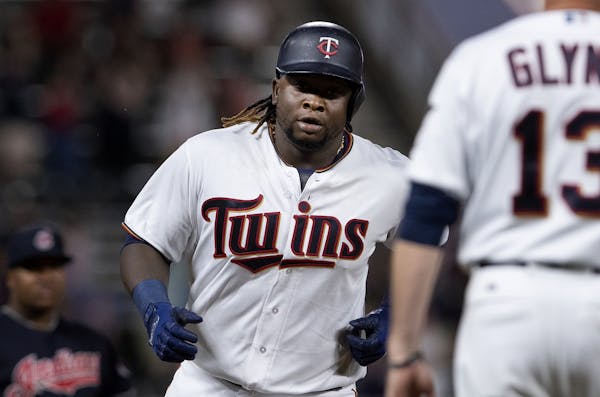Lance Lynn doesn't like to talk about his early struggles this season.
When asked recently what he needed to do a career-low walk rate of 5.94 per nine innings, Lynn said: "Throw more strikes."
Is there something he needs to change or adjust to do that? "Throw the ball in the zone."
Anything in his delivery he can tweak? "Throw the ball in the zone."
Point taken. There is nobody who has watched Lynn pitch in 2018 and will tell you Lynn has pitched up to expectations, and certainly not better than 2017, when Lynn had a 3.43 ERA. Not Lynn, whose ugly walk rate is identical to his ERA at 5.94, not the Twins, not any fans.
But would you believe there is one key advanced statistic in which Lynn is actually performing better than he was a season ago? No kidding.
It's called expected fielder-independent pitching, or xFIP. Maybe you've heard of it or seen it written about before, including in this newspaper. This metric attempts to calculate a pitcher's earned-run average by eliminating the factors a pitcher can't control, namely, how well the defense plays behind him. It uses all the outcomes a pitcher controls — walks, strikeouts and home runs (often called the "three true outcomes") — and puts it into a formula and spits out a number that attempts to remove defense from a pitcher's performance.
Lynn's xFIP last season was 4.75, according to the website FanGraphs. This season? 4.42. How in the world is that possible, especially when Lynn has pitched so poorly, except for his past two starts? And what does it all mean?
First, you have to look a few of the factors that account for such a big difference between actual ERA and xFIP, namely Lynn's strikeout rate and the batting average of balls in play against him. Going even deeper, there's a problem with Lynn's favored pitch — his four-seam fastball.
Lynn is striking out hitters at a near career-high rate thanks to an improved whiff rate of 29.2 percent on his curveball. His 9 percent strikeout rate is just below his career high of 9.2, set in 2012. That's a feather in Lynn's cap in an otherwise down year.
Batters are also getting balls to land for hits at a rate Lynn hasn't experienced in his career.
Opponents are hitting a whopping .365 when the ball is put in play against Lynn compared to just .244 a season ago. That .244 figure was an aberration to the good for Lynn. Opponents normally hit between .300 and .320 against him on balls in play.
This accounts for the biggest discrepancies between Lynn's ERA and his xFIP the past two seasons. Twins pitching coach Garvin Alston said Lynn was getting unlucky the past few months.
"There's a combination of things that's going on," Alston said recently. "His command, we talked about that and everybody knows about that. But also when he makes good pitches, balls are getting through. I can count of four or five different occasions where he made really good pitches and the balls just got through or the ball landed in front of the outfield. It's one of those things where it's the perfect storm for him right now and he's trying to turn it around."
But is it really just luck? Are the Twins a defensive mess behind Lynn whereas the Cardinals were Ziploc tight a season ago? Some of the blame for Lynn's high BABIP relates to his issues with his fastball.
Lynn is allowing hard contact on 40.9 percent of batted balls against him, according to FanGraphs. Lynn's hard contact rate previously topped 30 percent only once (2012). His exit velocity is 89.3 miles per hour this season as opposed to 85.7 last season, according to Baseball Savant. In other words, Lynn is giving up more hits on balls in play in part because batters are making harder contact against him. Because the righthander is walking people at a high rate, he is also giving up runs when hitters make contact against him.
Alston says this has to do with the Lynn's fastball movement, which has decreased. According to BrooksBaseball.net, Lynn has had between 4.57 and 5.58 inches of horizontal movement on his fastball in each season of his career. That is down to 2.74 this season.
"If you look at the film and the things it's doing, the ball goes where he wants it to," Alston said. "It's just a little bit of movement back to the middle of the plate, they're able to get the barrel on it. It's small, subtle things that are happening to him."
That's a problem for Lynn, whose four-seamer accounts for 44.4 percent of his pitches this season. There are mechanical issues Lynn can make to fix this, Alston said.
"It has to do with controlling your body finishing your pitches and all those different things," Alston said. "He knows. He's a veteran. You go back and look at his numbers, he's going to be fine. Everybody goes through something and unfortunately right now it's his turn."
But all is not lost for Lynn. His strikeout rate bodes well if he can make the adjustments Alston said, and Lynn's track record indicates he isn't the pitcher he has shown, and his past two outings — two runs over 11 innings — were a step in the right direction.
"It takes an inning," Alston said. "And once he gets that feeling you can repeat it and repeat it."
Chris Hine is the lead writer for North Score, the Star Tribune's sports analytics beat. startribune.com/northscore E-mail: chris.hine@startribune.com

